Rehumanism in Action: Historical & Contemporary Examples
These examples demonstrate how artists across centuries have combined exceptional skill with profound human purpose, creating art that offers Beauty, Truth, Love, Dignity, and the potential for Healing or Transcendence. Each work serves a purpose beyond mere representation—they invite connection, provide comfort, challenge perception, or offer meaning.
We encourage you to ask: 'So what?' What deeper purpose does each work serve? How does it contribute to human flourishing beyond its technical excellence?
Historical Examples (1800-1940)

The Gleaners
Jean-François Millet (1857)
Transforms humble labor into profound art through masterful technique and Dignity.

Gassed
John Singer Sargent (1919)
Depicts chemical warfare with Truth while maintaining soldiers' Dignity and offering collective Healing.
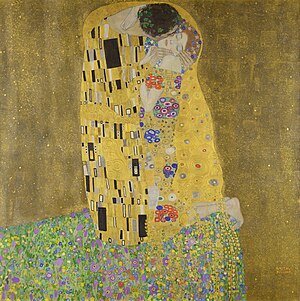
The Kiss
Gustav Klimt (1907-08)
Celebrates intimate Love with profound Beauty, honoring romantic connection as sacred.
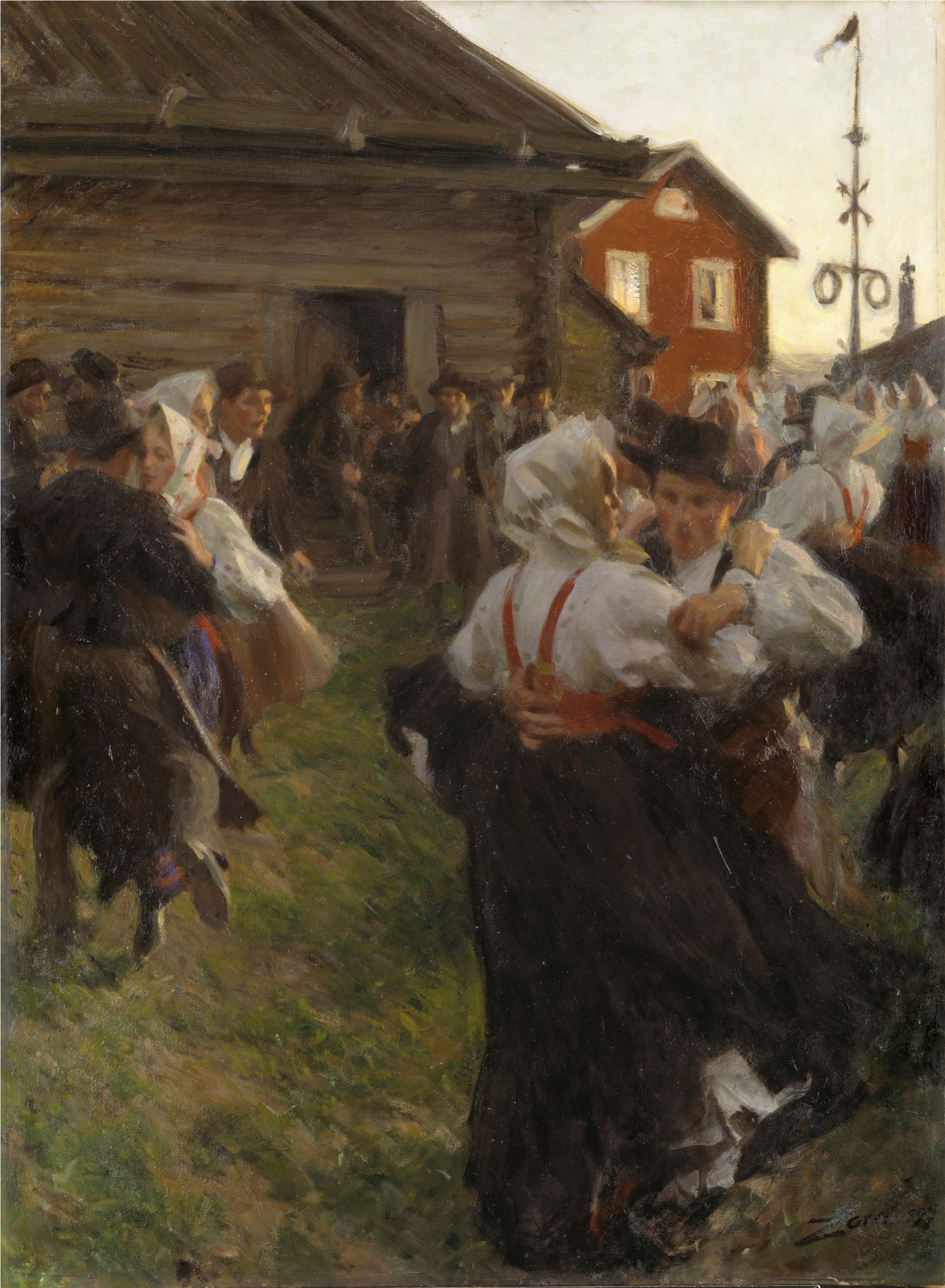
Midsummer Dance
Anders Zorn (1897)
Captures infectious community celebration, connecting us to universal human experience.
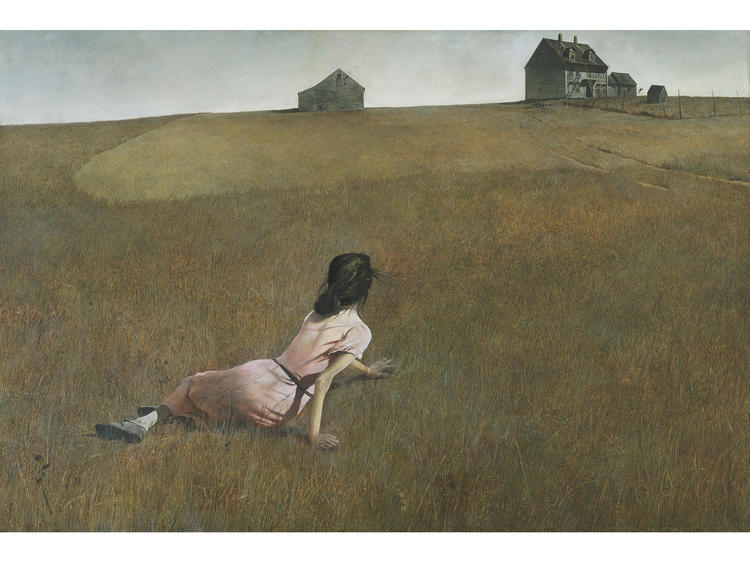
Christina's World
Andrew Wyeth (1948)
Transforms a moment into universal symbol of human resilience through painstaking realism.
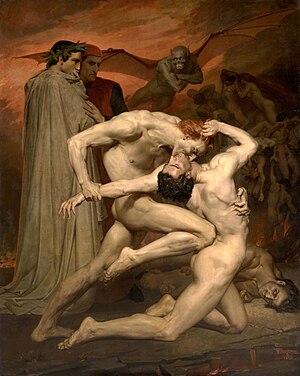
Dante and Virgil
William-Adolphe Bouguereau (1850)
Transforms literary allegory into meditation on moral choice through exceptional artistry.

The Light of the World
William Holman Hunt (1851-53)
Bridges material and spiritual worlds through accessible symbolism and meticulous craft.
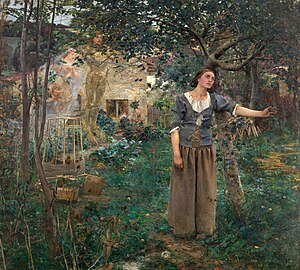
Joan of Arc
Jules Bastien-Lepage (1879)
Shows Joan as real peasant girl experiencing genuine spiritual visitation with psychological Truth.

Barge Haulers on the Volga
Ilya Repin (1870-73)
Presents each worker as complete individual, creating social change through artistic excellence.
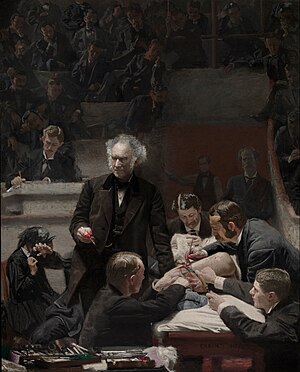
The Gross Clinic
Thomas Eakins (1875)
Transforms surgery into meditation on healing, revealing nobility in human endeavors to heal.
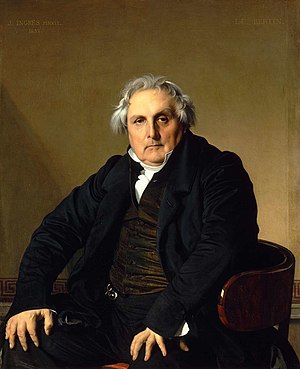
Portrait of Monsieur Bertin
J.A.D. Ingres (1832)
Captures formidable personality with Truth, transcending likeness to explore individual Dignity.
Contemporary Examples (Post-1940)
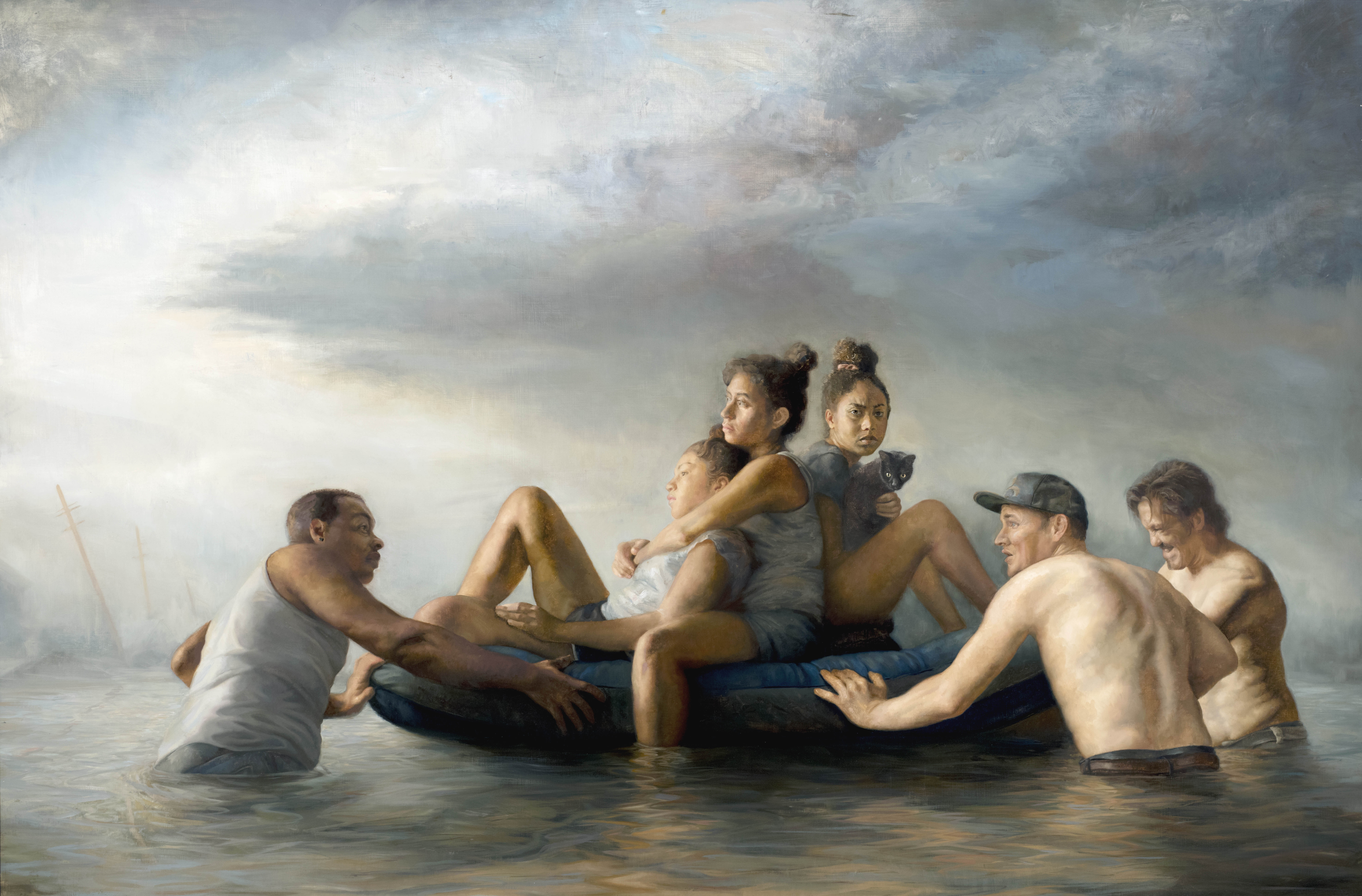
Deluge
Jonathan Hodge (c. 2006)
Transforms Katrina tragedy into meaningful art, creating space for collective mourning and Healing.
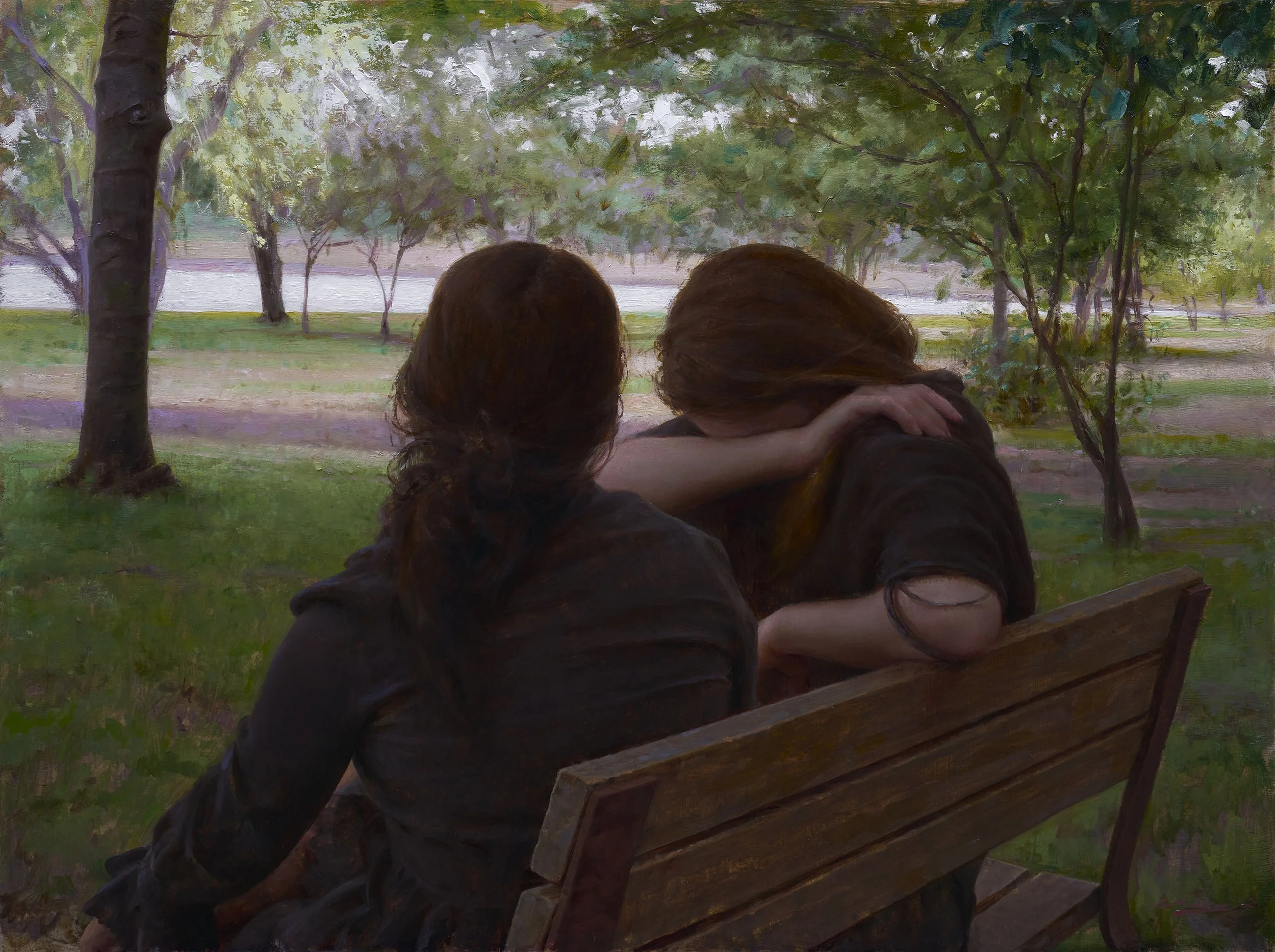
Old Friends
Alex Venezia (c. 2021)
Elevates friendship to profound significance, showing how caring constitutes meaningful Love.
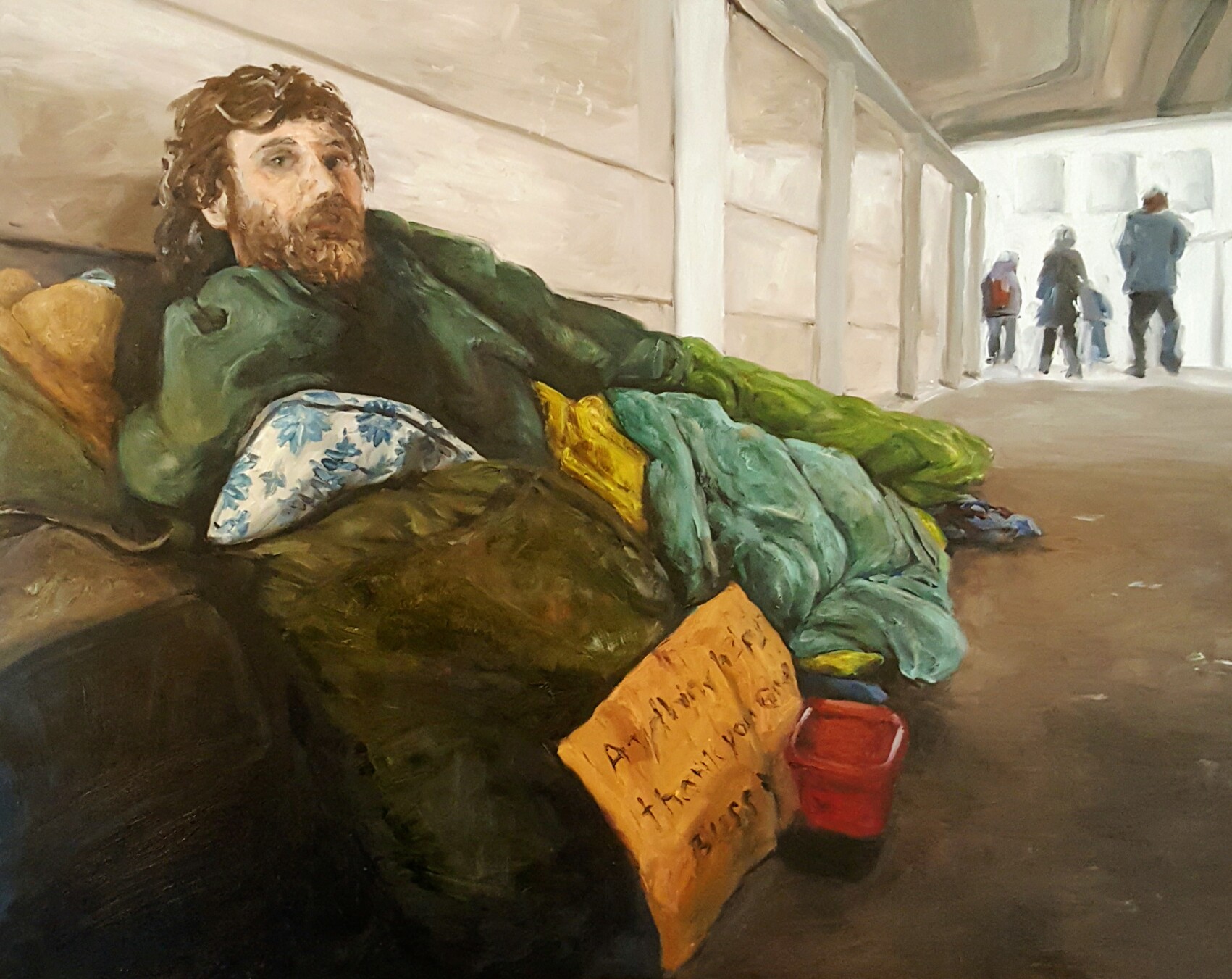
Thank you, God Bless
Andrew Conru (c. 2016)
Finds the sacred in everyday encounters, transforming chance meetings into spiritual meditation.
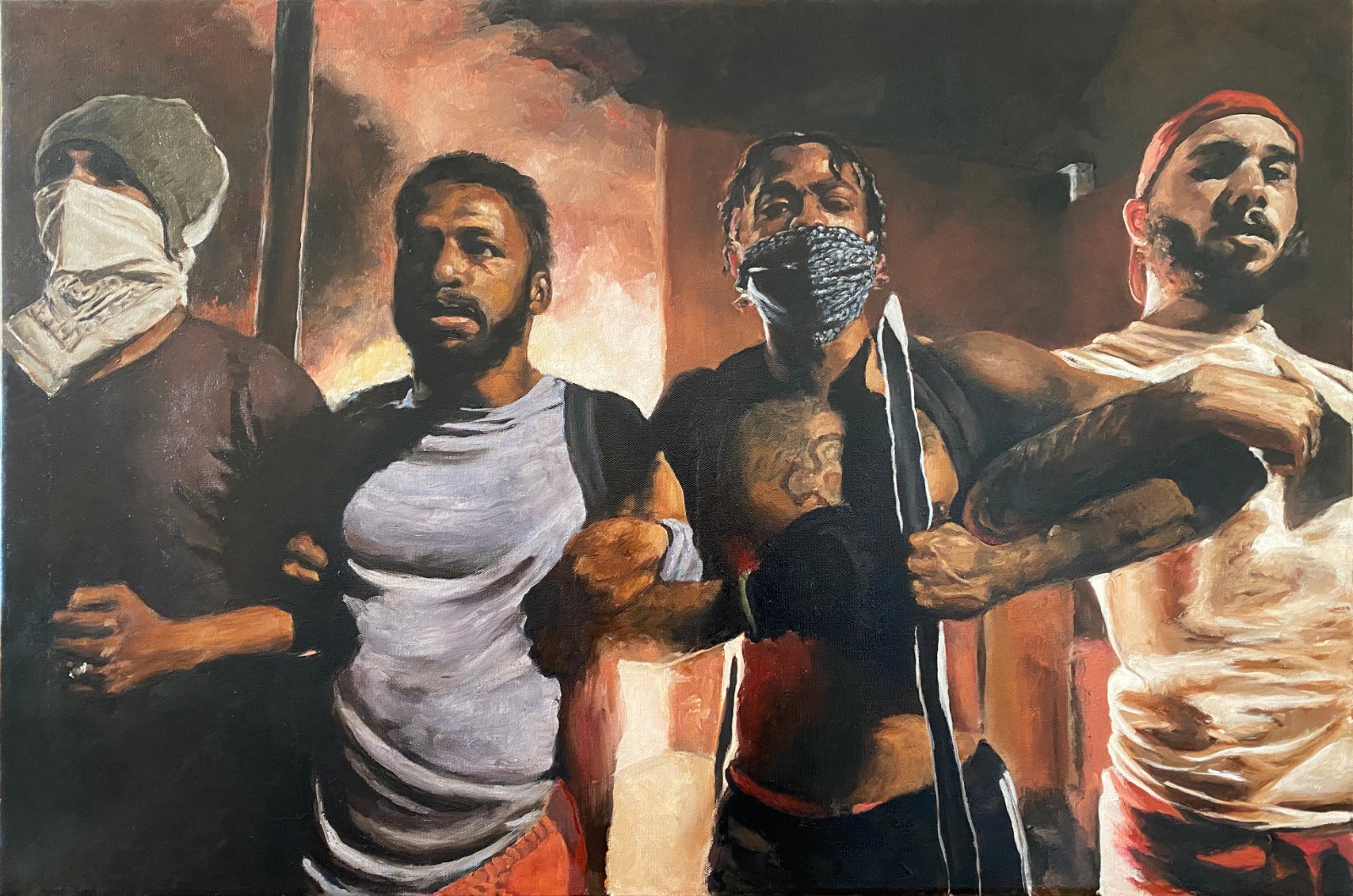
Brothers in Arms
Andrew Conru (c. 2020)
Addresses social tensions with empathy, honoring individual Dignity while serving as bridge-building.

More Than Material
Ernest Wood III (2019)
Honors individual identity through meticulous technique, revealing the sacred in the everyday individual.
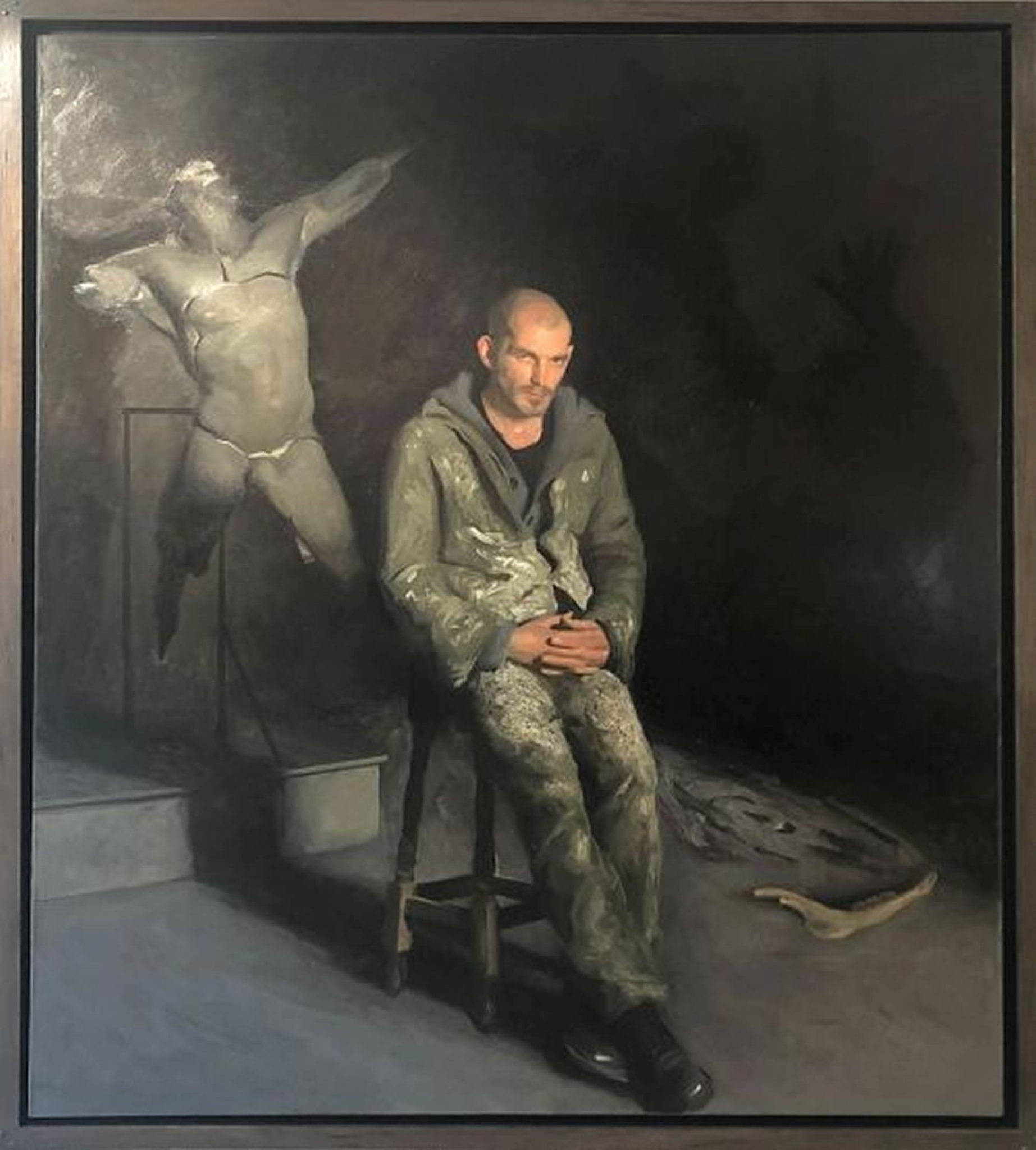
Broken Bodies
Jamie Coreth (Date Unknown)
Explores recovery from trauma, finding Dignity in the slow process of becoming whole again.
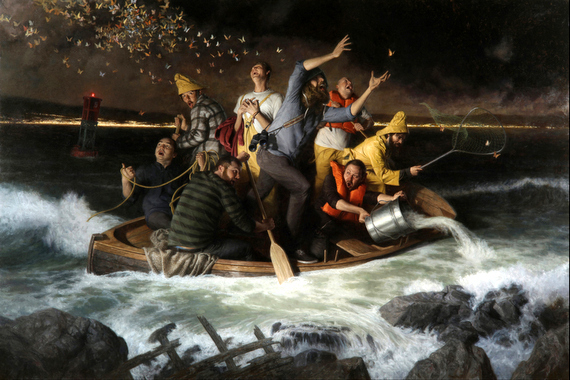
Ship of Fools
Carl Dobsky (Date Unknown)
Updates classical allegory for modern times, balancing social criticism with compassionate observation of human fallibility and collective self-deception.
Contemporary Themes for Rehumanism
Building upon these historical touchstones, contemporary artists exploring Rehumanism might consider themes that address pressing modern concerns while upholding the core values of Beauty, Truth, Love, Dignity, and potential for Transcendence or Healing.
The Quiet Dignity of Essential Work
Why: Modern society often overlooks those performing essential labor.
So What: Art could restore Dignity to these roles, showing their Beauty and importance, fostering gratitude and connection.
Example: A portrait capturing the focused expression of a chef during service, steam rising around them, hands expertly plating food.
Finding Connection in Digital Isolation
Why: Technology connects us instantly but can lead to profound loneliness.
So What: Art could explore authentic connection vs. shallow interaction, offering Healing by acknowledging shared isolation.
Example: Two people deeply engaged in conversation across a table, phones set aside, contrasted with blue light glow on a solitary figure.
Bridging the Divide: Empathy Across Polarization
Why: Societal polarization creates echo chambers and dehumanizes opposing views.
So What: Art could depict common ground, vulnerable moments across divides, fostering empathy and revealing shared humanity.
Example: Two neighbors with different political signs sharing a moment of conversation over a fence about a shared local concern.
Navigating Anxiety in Modern Life
Why: Rates of anxiety and depression are high, fueled by information overload and uncertainty.
So What: Art could visualize internal experience with compassion, offering comfort and affirming inherent Dignity.
Example: A figure by a window in soft morning light, practicing deep breathing, conveying calm sought amidst internal turmoil.
The Search for Authenticity in a Curated World
Why: Social media encourages curated self-presentation, leading to comparison and inadequacy.
So What: Art could celebrate vulnerability and genuine human experience, affirming Beauty in imperfection.
Example: Close-up portrait focusing on 'imperfect' details—lines, freckles, asymmetry—rendered with care that reveals character.
Reconnecting with Nature's Rhythm
Why: Urbanization and screen time disconnect many from the natural world's grounding patterns.
So What: Art can depict humans finding solace in nature, offering visual Healing and connection to something larger.
Example: A person kneeling in a small urban garden, hands covered in soil, examining a sprouting seed.
Hope and Resilience Amidst Uncertainty
Why: Global challenges create apprehension about the future, especially for younger generations.
So What: Art could focus on determined optimism and quiet resilience, offering inspiration without naive solutions.
Example: A young person looking at a complex cityscape with thoughtful determination, holding a small thriving plant.
The Beauty of Intergenerational Connection
Why: Age segregation and fast-paced life can weaken bonds between generations.
So What: Depicting shared wisdom, care, and companionship highlights enduring Love and affirms Dignity of all ages.
Example: An elderly hand guiding a child's hand as they learn a traditional craft, faces showing concentration and affection.
Human Creativity in the Age of AI
Why: AI prompts questions about the uniqueness of human consciousness and creativity.
So What: Art created with human hands serves as statement about embodied experience and irreplaceable human touch.
Example: A lone artist working with traditional paints while generic digital images spill from a nearby screen.
Finding the Sacred in the Mundane
Why: Modern life can feel desacralized, lacking moments of awe or deeper meaning.
So What: Art can elevate ordinary moments, revealing potential for Beauty and Transcendence within them.
Example: Light streaming through a window onto a simple table setting, imbuing ordinary objects with quiet reverence.
The Complexity Beyond Black-and-White Thinking
Why: Nuance is often lost in polarized discourse demanding simple answers.
So What: Art can explore ambiguity and internal conflict, encouraging deeper, more compassionate thinking.
Example: A portrait where the subject's expression holds conflicting emotions—joy and sorrow, strength and doubt.
Friendship as a Pillar of Support
Why: Strong friendships are crucial for well-being but challenging to maintain in busy societies.
So What: Art depicting loyalty, support, and shared joy celebrates this vital form of Love and connection.
Example: Two friends sitting on a porch swing in comfortable silence, simply enjoying each other's presence.
The Body as a Site of Experience
Why: Cultural narratives often focus on idealized bodies, ignoring realities of aging, illness, or diversity.
So What: Representing the body with honesty and Dignity across all experiences challenges narrow Beauty definitions.
Example: Portrait of an elderly person focusing on wrinkles rendered with detail that conveys wisdom gained.
The Narrative Power of Place and Home
Why: Displacement, gentrification, and rootlessness affect many people today.
So What: Art exploring emotional connection to places evokes feelings of belonging, memory, and identity.
Example: Interior scene with worn furniture and personal objects that tell the story of inhabitants and their history.
Moments of Clarity and Decision
Why: Life requires navigating crossroads and making significant choices.
So What: Depicting quiet contemplation or realization offers reflection on growth and self-discovery.
Example: A person paused at a fork in a path, looking inward, suggesting internal reckoning before choosing direction.
The Craftsmanship of Repair and Restoration
Why: In a disposable culture, the act of mending holds counter-cultural significance.
So What: Art focusing on careful repair becomes metaphor for Healing, celebrating Beauty in restoration.
Example: Close-up on hands carefully stitching torn fabric, focused light highlighting the care involved.
Shared Rituals and Community Gathering
Why: Meaningful communal rituals provide structure and connection, which may be weakening.
So What: Depicting contemporary gatherings highlights the importance of shared experience and belonging.
Example: Diverse group around a bonfire, faces illuminated by warm light, conveying easy camaraderie.
The Weight and Release of Memory
Why: Memory shapes identity but can also be a burden.
So What: Art can explore how individuals grapple with the past, suggesting narratives of reconciliation or letting go.
Example: A figure looking at an old photograph with nostalgia and resolution, surrounded by the present moment.
Mentorship and Passing on Knowledge
Why: Transfer of skill and wisdom is crucial for cultural continuity but requires dedicated effort.
So What: Scenes depicting mentorship celebrate lineage, generosity, and the pursuit of excellence.
Example: Experienced artisan guiding younger apprentice's hands, both focused on shared purpose and respect.
Contemplating the Cosmos/Vastness
Why: Daily life can feel small; perspective is often needed.
So What: A figure contemplating the stars or ocean evokes awe and Transcendence, offering peace and perspective.
Example: Small human figure silhouetted against vast starry sky, emphasizing scale and inviting cosmic contemplation.
These are starting points for contemporary Rehumanist art. The goal is always art that serves—that offers Beauty, Truth, Love, Dignity, Healing, or Transcendence to viewers in our complex contemporary world.
